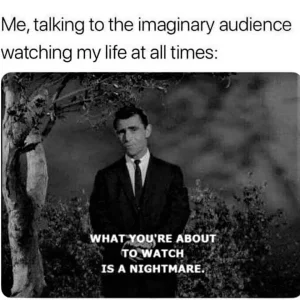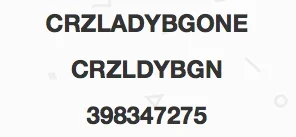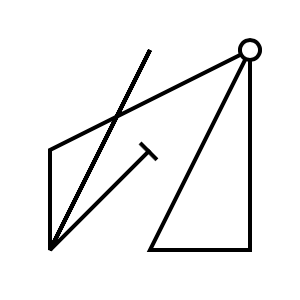Just for
@Ifur
Runic Arts and Sciences Reading List
by TS permission by Michael A. Aquino
The significance of this category of the reading list goes far beyond its specific subject material.
It involves, quite bluntly, a major re-writing of the history of western European civilization.
Until now, the "history of Europe" surveys taught in most universities have addressed the history of Christian Europe: the feudal states and nations which emerged following the decline of the Roman Empire.
Pre-Christian [or later non-Christian] Europe was considered "uncivilized", hence good for little other than a few anecdotes of marauding Goths, Vikings, Picts, and the like.
The so-called "neo-pagan" or "Wiccan" religion invented by post-World War II enthusiasts has further confused the situation by representing a rag-bag of medieval and modern fables and superstitions as a quasi-unified, Hippie-type nature religion supposedly prevalent throughout pre-Christian Europe.
Nothing could be further from the truth.
Although authorities such as Elliot Rose (#6C) have long since exposed this sham, the Wiccan movement prances contentedly along, blissfully undisturbed by inconvenient facts.
Magister Flowers, in his years of research into ancient Europe, has uncovered the key to the authentic pre-Christian wisdom of that subcontinent.
His work in this field is no less significant than that of Champollion with the Rosetta Stone.
His findings make possible, for the first time, a true understanding of how the forces of the universe were understood by the European cultures later to be systematically exterminated by Christianity.
We learn that these ancient Europeans were not "savages" after all, but had developed cosmologies and philosophies as sophisticated and subtle as those of the Maya and ancient China.
What follows is a key to a door which has long been locked.
INTRODUCTION
Stephen E. Flowers
Only those works which have appeared in commercially published form will be cited.
I will also provide some idea of the direction this work will be going in the future - although this aspect remains open to dynamic influences and could change course as new data flows in to be coordinated.
Underlying all of my works are several principles.
Most important among these is that there are certain hidden keys to initiation and to Becoming which I seek to find in the methods followed in my work in general.
The chief element in this method is the dynamic synthesis of polar extremes - the two most important of these are the subjective and objective universes. Reflections of this process run through the work - from the cosmological model of fire and ice to the psycho-magical dichotomy of Huginn and Muninn, the two Odian ravens.
These represent the rational, logical, analytical mind and the noetic psyche and storehouse of perceived eternal forms respectively.
The method underlying all of my works is a planned and deliberate oscillation between logical procedure and noetic process.
The simplest way to put this is that there is a moving back and forth of focus between the objectively, historically accurate aspects of a tradition and the subjective and vibrant aspects.
It is in the eternal ebb and flow, in the dynamic process - unending and without end - that the ultimate synthesis is found - not in a state of being.
This is the essence of what I call the "Polarian Method".
This can be seen in the corpus of material when one couples the contents of "Runes and Magic" (written as a Ph.D. dissertation according to strict scientific standards) with my first "runic trilogy", ("Futhark", "Runelore", and "At the Well of Wyrd".)
"Runes and Magic" is the crystalline focal point of the logical, analytical end of the spectrum, while the "runic trilogy" is equally that for the noetic, intuitive end.
Once the entire corpus is viewed from this perspective, I think it takes on more of its meaning as a dynamic whole.
Necessary to the use of this guide are a few words on how it can be used most beneficially.
The codes have been given as Order of the Trapezoid (OT-), as those are most harmonious with the overall contents of this list.
If I were to advise someone on a course to take in studying this corpus, I would say that "Runelore", "At the Well of Wyrd", and "Futhark" (in that order) would be the foundation.
From there the priority codes could be used to determine a useful ordering of the other works.
(Actually a full course of reading of most of the works on the list is included in the text of "The Nine Doors of Midgard".)
All of the works presented here are in the order of their chronological appearance.
In the commentaries, I not only try to give a sense of the content and purpose of the work, but also show how it relates to the others in the web-work.
In conclusion the present a prospectus for future works and works in progress.
SF: "In many ways this book would look much different if I were to write it today. The MS for the work was actually finished in XIV, but it was not published until XIX. [This work was actually preceded by another book-length MS originally entitled "A Primer of Runic Magic", finished in X.] "Futhark" remains a fertile field for experimentation by free-lance rune magicians, but its contents are actually a bit too influenced by the traditions of the Armanen to be entirely satisfactory to me now." 24B. "Runelore: A Handbook of Esoteric Runology" by Edred Thorsson. York Beach, ME: Weiser, 1986. (OT-1)
SF: ""Runelore" is basically the lore- curriculum of the Rune-Gild in summary form. It contains a current view of historical runology, esoteric lore concerning the runes, as well as Teutonic cosmology, psychology and theology. It is the first of my works to have been completed after my entry into the Temple of Set. Its contents are basic and essential to understand before serious and authentic work can be undertaken with the Runes." 24C. "Runes and Magic: Magical Formulaic Elements in the Older Runic Tradition" by Stephen E. Flowers. Berne: Peter Lang, 1986. (OT-5)
SF: "This is the published form of my dissertation written at the University of Texas at Austin. It represents an exhaustive study of the older runic inscriptions analyzed as magical formulaic communications based on a semiotic theory of magic - magic as a system of 'inter-universal communication' (subjective/objective). It contains introductory material on the theory presented, and then applies that theory to the evidence of the actual inscriptions. This work is thought by most to be a 'difficult read', and may be quite hard to find by now. Only 250 copies were printed." 24D. "At the Well of Wyrd: A Handbook of Runic Divination" by Edred Thorsson. York Beach, ME: Weiser, 1988. (OT-2)
SF: "This was the third in the original 'runic trilogy', with the other two being "Futhark" and "Runelore". This work takes a highly traditional look at the art and practice of runecasting and the laying of the runestaves." 24E. "The Secret of the Runes" by Guido von List. Translated and introduced by Stephen E. Flowers. Rochester, VT: Destiny, 1988. (OT-4)
SF: "In many ways I see my work as a continuation - a Remanifestation - of works that have been undertaken by others in the past. From the most ancient ancestral Runemasters, to the German and English Romantics, down to the early 20th century rune magicians of Germany. The foundations for this latter group were directly laid by Guido von List, who was certainly more of a magician than he might at first appear. This book is a historical and scientific study of List and his ideology, along with a translation of its most famous expression, "Das Geheimnis der Runen"." 24F. "The Truth about Teutonic Magick" by Edred Thorsson. St. Paul, MN: Llewellyn, 1989. (OT-4)
SF: "This little volume (25 pages) is really a general program for the 'Teutonic Magick Series' which I created and for which I am acting as a consulting and acquisitions editor for Llewellyn Publications. In it can be found a general outline of the focus and scope of the practical/magical aspects of the overall work. What also becomes obvious here is that the work has expanded beyond that which I must personally undertake. Other magicians and writers have taken up the banner and are moving outward into the world with it." 24G. "The Galdrabok: An Icelandic Grimoire" by Stephen Flowers. York Beach, ME: Weiser, 1989. (OT-4)
SF: "This volume contains a translation (from Old Icelandic) of the complete text of a Scandinavian book of magic along with a collection of other magical spells and incantations of similar natures. The work shows a continuity of the Germanic (Northern) method of working magic carried over from pre-Christian times. There is also an introductory section which gives a history of magic in Iceland in post-Viking times." 24H. "Rune Might: Secret Practices of the German Rune Magicians" by Edred Thorsson. St. Paul, MN: Llewellyn, 1989. (OT-4)
SF: "This whole work really represents a historical footnote to the 'runic trilogy', as an outline and practical discussion of the magical methods of the early 20th century German rune magicians. In many ways this is the general and practical companion to "The Secret of the Runes" by Guido von List. The material contained in "Rune Might" can also act as an effective bridge between the Germanic tradition and the more usually found 'Western' (really Southern) tradition." 24I. "A Book of Troth" by Edred Thorsson. St. Paul, MN: Llewellyn, 1989. (OT-5)
SF: "As Black Magic has existed, and does exist, in a variety of cultures and religious contexts - not only in those in which it is seen as a spiritually criminal kind of activity - this work seeks to help reestablish the more general White Magical (or Religious) tradition of the North. In this more healthy general context of former days, the practice of Black Magic was more completely supported by the common faith - even if it was just as little understood - and would certainly again find such support in a renewed system of the true faith of the North should it actually revive. It is to this end that this book was cast upon the world." 24J. "Fire and Ice: Magical Teachings of the Brotherhood of Saturn, Germany's Greatest Secret Occult Order" by Stephen E. Flowers. St. Paul, MN: Llewellyn, 1990. (OT-2)
SF: "This is a general and fairly comprehensive introduction to the history, ideology, structure and rituals of the Fraternitas Saturni, which is a Thelemite (but non-Crowleyan) lodge which has dominated the German occult scene since the time of its inception in the late 1920s. With this book, I took a step out and back to my occult roots in the 'mainstream' western magical tradition. One of the main reasons for undertaking this study and writing this book was to explore the way in which an aeonic Word finds expression beyond the bounds of its Magus. A preface by Michael A. Aquino is scheduled to appear in future printings." 24K. "Rune Song: A Practical Guide to Rune Galdor" by Edred Thorsson. Llewellyn, forthcoming (OT-1)
SF: ""Rune Song" is a combination book and tape package. I have for a long time seen that the pronunciation of the now- exotic-sounding words and phrases of the Teutonic tradition was felt to be a major stumbling-block along the way to learning the lore. This project is designed to remedy that problem. Pronunciation of languages such as Proto- Germanic (the reconstructed language from which all Germanic tongues are derived), Old English, or Old Norse is usually the kind of thing only learned in the Ivory Towers of Academia. With "Rune Song" I hope to make this kind of information available beyond that sphere. 24L. "The Nine Doors of Midgard" by Edred Thorsson. Llewellyn, forthcoming. (OT-1)
SF: "This is a basic curriculum in magical training which takes the student from the beginning, assuming no prior training, and in a step-by- step fashion provides exercises and a curriculum of reading and other sorts of training so that by the end of the complete program it is possible to be considered for Naming as a Thegn or Drighten in the Rune-Gild. This program was ten years in the making, and will be published next year. In the meantime it is available for a donation to the Rune-Gild." 24M. "The Book of Ogham" by Edred Thorsson. Llewellyn, forthcoming. (OT-4)
SF: "This represents the first grand experiment in the use of the Polarian method moving outside of the home base of the Germanic tradition into the kindred Celtic tradition. It seems that no magical tradition has been subject to more bastardization than the Celtic, so this effort at creating a useful synthesis according to my methods seems a worthwhile endeavor." Supplementary Works - SF There is a corpus of writing which is often essential to the fullest understanding of the depth of the Germanic tradition, and which is not covered in the standard reading list of the Temple of Set. For a guide to these writings, I have provided this supplementary reading list. These works provide a larger context for the understanding of many works in Runelore, and give us a deep level basis for the understanding of the Northern (Indo- European-based) Tradition of the Black Art, which is distinguished in many ways from the Southern (Middle Eastern-based) Tradition. 24N. "The Well and the Tree" by Paul C. Bauschatz. Amherst: University of Massachusetts Press, 1982. (OT-4)
SF: "To date this is the most valuable study on the Germanic conceptions of time and the structure of the cosmos. It is a highly scholarly text which nevertheless contains many insights of direct magical use. Reviewed in "Runes" #VII-2 by Priestess Rebecca Lance D.Tr." 24O. "Gods of the Ancient Northmen" by Georges Dumezil, ed., tr. E. Haugen, et al. Berkeley: University of California Press, 1973. (OT-3)
SF: "This book outlines the connections of Germanic myth and religion with the Indo- European tripartite socio-religious structure. This is not merely a 'survey' of Germanic mythology like other books with similar titles. It is an invaluable text to dispel notions that the gods are merely the simple personifications of natural forces, or the 'deifications' of mortal men." 24P. "The Myth of the Eternal Return, or Cosmos and History" by Mircea Eliade. (= Bollingen Series 46) tr. W. Trask. Princeton: Princeton University Press, 1971 [1954]. (OT-4)
SF: "All works by Eliade are recommended, but this one is the one with which you should start. It explores the mythic meaning of 'time', 'history', 'the center', etc. The ideas contained in this book are fundamental to real understanding of mythic traditions, and necessary to learning 'to think mythically'." 24Q. "The Road to Hel" by Hilda R. Ellis (Davidson). Cambridge: University of Cambridge Press, 1943. (OT-4)
SF: "This is an important study of the Teutonic concepts of death, the soul, and the other world(s)." 24R. "Teutonic Mythology" by Jacob Grimm, tr. J.S. Stallybrass. New York: Dover, 1966. 4 vols. (first published 1835). (OT-4)
SF: "Although some of this work is now out-of-date, it remains a veritable treasure-trove of material from every Teutonic tradition. It includes discussions of all the deities and beings, cosmology, magic, herbs, etc." 24S. "The Poetic Edda" by Lee M. Hollander, tr. and ed. Austin, TX: University of Texas Press, 1962. (OT-2)
SF: "This is the best translation of the "Elder Edda" into English. Not only is it quite accurate, but it also gives a real feel for the form of the Old Norse poetry - and can in turn serve as a model for the composition of modern Eddic verse in English." 24T. "A History of the Vikings" by Gwyn Jones. Oxford: Oxford University Press, 1968. (Also a second revised edition.) (OT-4)
SF: "This is the best general history of the Viking Age available in English. It may be important for some Initiates to gain a fuller understanding for the lives and values of this last great pagan culture of Europe." 24U. "In Search of the Indo-Europeans: Language, Archaeology and Myth" by J.P. Mallory. London: Thames & Hudson, 1989. (OT-4)
SF: "This up-to-date survey of the whole spectrum of Indo-European studies is essential to understanding the roots of Teutonic thought and society. It is from these seeds and from these roots that the Teutonic tree blooms; understand the seed and you understand the very core of the fruit." 24V. "Volsunga Saga" by William Morris, tr. Introduction and glossary by Robert Gutman. New York: Collier, 1962. (OT-3)
SF: "Gutman's introduction provides a fine historical, literary, and artistic background to this great saga of the Teutonic peoples. Gutman compares the "Volsunga Saga" with the German "Nibelungenlied" and with Wagner's treatment of the same themes. The saga itself is one of the most important sources for understanding the values of the Viking Age, and it certainly shows us how the Norsemen viewed their own broader Teutonic heritage. The story of a clannic line - with its divine descent (from Odhinn), and its vicissitudes, flowering and decline - is the Teutonic soul epitomized. The saga is of central importance to all seeking the inner meaning of "Xeper" in the context of the Teutonic tradition." 24W. "The Prose Edda" by Snorri Sturlson, tr. A.G. Brodeur. New York: The Scandinavian American Foundation, 1929. (OT-3)
SF: "This is by far the best and most complete translation of the "Younger Edda" in English. It includes not only the "Gylfaginning", but also the "Skaldskaparmal" (which is not completely provided in the Jean I. Young translation. Especially useful are Brodeur's interpretations of the proper names in the text." 24X. "Egil's Saga" by Snorri Sturlson, tr. H. Palsson and P. Edwards. Harmondsworth: Penguin, 1976. (OT-4)
SF: "This saga is the greatest study of a rune magician from the elder age. There are many mysteries contained in this saga - some of them not quite so obvious as the many times in which Egill uses rune magic and poetry to alter the objective universe." 24Y. "Myth and Religion of the North" by E.O.G. Turville-Petre. New York: Holt Rinehart & Winston, 1964. (OT-3)
SF: "Turville-Petre's book is the best survey of old Scandinavian religion in English, and an excellent one by any standard. He discusses the sources of our knowledge, all the divinities, the divine kings, heroes, guardian spirits, temples and objects of worship, sacrifice, death, and cosmogony and cosmology."











